
-
Find the right food for your petTake this quiz to see which food may be the best for your furry friend.Find the right food for your petTake this quiz to see which food may be the best for your furry friend.Featured products
 Adult Chicken & Barley Recipe Dog Food
Adult Chicken & Barley Recipe Dog FoodSupports lean muscle and beautiful coat for adult dogs
Shop Now Puppy Sensitive Stomach & Skin Salmon & Brown Rice Recipe
Puppy Sensitive Stomach & Skin Salmon & Brown Rice RecipeDelicious, highly digestible recipe, gentle on stomachs. Nourishes skin & promotes a lustrous coat
Shop Now Puppy Large Breed Chicken & Brown Rice Recipe
Puppy Large Breed Chicken & Brown Rice RecipeVital nutrients to support 5 essential building blocks for lifelong health
Shop NowFeatured products Kitten Chicken Recipe
Kitten Chicken RecipeVital nutrients to support 5 essential building blocks for lifelong health
Shop Now Adult 7+ Chicken Recipe Cat Food
Adult 7+ Chicken Recipe Cat FoodSupports energy level and beautiful fur in mature cats
Shop Now Adult Urinary Hairball Control Chicken & Rice Recipe Cat Food
Adult Urinary Hairball Control Chicken & Rice Recipe Cat FoodActively supports the health of the whole urinary system
Shop Now -
Dog
- Dog Tips & Articles
-
Health Category
- Weight
- Food & Environmental Sensitivities
- Urinary
- Digestive
- Joint
- Kidney
-
Life Stage
- Puppy Nutrition
- Adult Nutrition
- Senior Nutrition
Cat- Cat Tips & Articles
-
Health Category
- Weight
- Skin & Food Sensitivities
- Urinary
- Digestive
- Kidney
-
Life Stage
- Kitten Nutrition
- Adult Nutrition
Featured articles The Incredible Science Behind Your Pet's Microbiome
The Incredible Science Behind Your Pet's MicrobiomeLearn what a pet's microbiome is, how it contributes to your pet's gut & overall health, and why nutrition is important in maintaining healthy microbiomes.
Read More Pet Food Storage Tips
Pet Food Storage TipsDiscover how and where to store your dry, as well as canned, dog and cat food. Learn how to find the "best before" dates on all Hill's pet food packaging.
Read More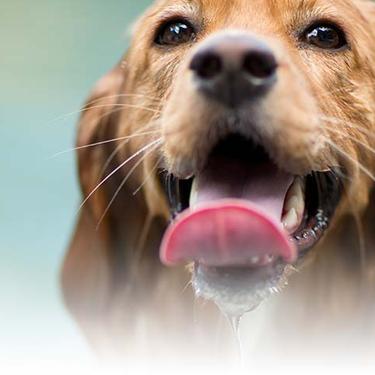 Water
WaterDiscover why water is the most important nutrient for your dog or cat to live a healthy life. Find out how much water your pet should consume each day.
Read More -


When you first decided to adopt a dog, you might have expected puppy training to be a ton of fun. But when you imagined a little dog frisking around and chewing on his leash as you take him for walks, you certainly didn't picture puddles of pee on your floor or all the nighttime barking and whining. Just because you've hit a few snags along the way doesn't mean learning how to train your puppy has to be tough. It can be as fun as you hoped it would be. If you're wondering how to train your pup so that you'll both have a good time, read on. These four dog training hacks are the best place to get started.
1. Stick with Sleep Training
Thought sleep training was just for babies? You're barking up the wrong tree (sorry, bad pun). Puppies need help learning proper sleep habits just like children. If you haven't taken your dog home yet, know that for the first few days, maybe even a week, it may be difficult to get some shuteye. Why? Well, besides being a "baby" just learning about the world, your pet is in a brand new environment, and that's a huge adjustment.
Getting your pup familiar with the differences between day and nighttime starts with a few small steps. First, make a comfortable environment for your pet to bed down. A lush doggy bed or comfortable blankets in a crate will add a sense of comfort to the evening routine. Next, it's time for lights out. While you may think keeping a low light on will put your puppy at ease, you're forgetting that your job is to teach your pet the difference between night and day. Just like humans, dogs produce a sleep-inducing hormone called melatonin, says Preventive Vet. Because lights affect how the body produces melatonin, a dark room is a must. Besides the lights, you should turn off or cover all phones and TV screens.
Then, it's time for the training. Just like babies, your puppy may wake up in the middle of the night because he needs to relieve himself. Don't deny him the opportunity, but at the same time, don't make a big deal about the awake time either. If your dog wakes you up and you suspect he may need to pee, bring him outside, avoiding eye contact and too much verbal interaction. These will only stimulate your pet. If your puppy whines a lot for attention, the most important thing to do is to ignore him. While it is hard to ignore the whimpers of a sad puppy (especially if they're keeping you up), it's important that he understands that at nighttime he is supposed to be sleeping and you're not there to give him attention.
Be proactive and cut the food and treats a few hours before bedtime, but don't forget to take your pet out a few more times to empty his bladder. It can also be a good idea to play with him a couple of hours before bedtime to wear him out. Don't play with him right before bed because this will keep his body and mind in an active state and will keep him awake. Give his body some time to get tired after play and he'll be out before you know it.
And finally, be patient. Sleep training takes patience and consistency. Then, once your puppy learns positive sleep skills, everyone will go back to getting their beauty sleep.
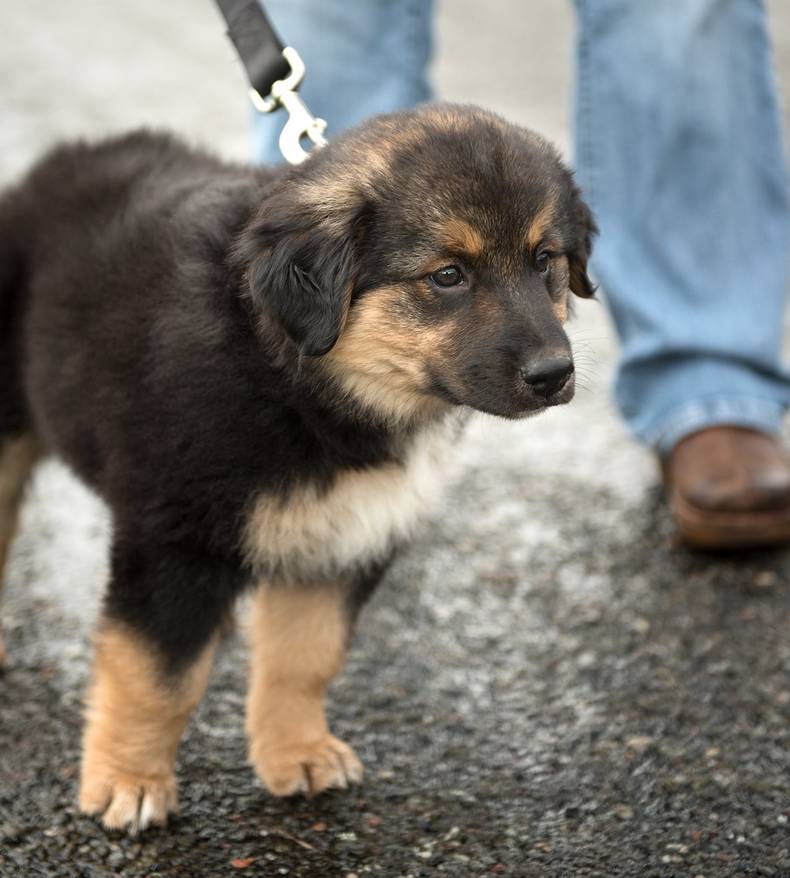
2. Be Belt Buddies
Is your puppy making puddles on the floor, or worse, is he sneaking into different rooms to relieve himself? One of the easiest ways to ensure your pet doesn't to get into any trouble is to keep him close to you at all times. Though this isn't always easy when you're busy cleaning, cooking, chasing children or simply vegging out on the couch after a long day of work, don't fret. There's an easy way to keep your pet close regardless of what activity you're doing.
Leash your dog and attach the end of the strap to your belt loops. Opt for a long leash or lead, and your dog will never be more than a few feet away from you at all times. Then, when you notice your pet getting antsy or whining, you can run him right outside to practice his potty training routine.
Granted, this tip won't work if you're in the shower, but there's no reason why your dog can't rest on the bath mat.


Tasty Tips
3. Attach Bells to the Door
Ding, ding, ding! It's potty time! How do you know? Well, if you teach your dog during puppy training to paw the bells you strategically placed on the door, you won't have to guess when it's time to go outside. This is one of the puppy training hacks that will be useful his entire life. It's easy — and fun — to train your pet, too. Simply purchase or DIY a row of bells and hang them from your doorknob. The length should be long enough that your dog can either paw it or nudge it with his nose when he wants to alert you he's ready to go outside.
At first your dog isn't going to know what to do with the bells. He may or may not like the sound, as it will be new to him, so you should appear upbeat and excited to ring the bell every time you take your pet outside. If you're using a word like "potty!" or "outside!" to help train your dog where to use the bathroom, say it while ringing the bell and opening the door. After hearing the bells ring every time he goes outside to do his business, he'll eventually associate the sound with the activity. After a short period of time, use your dog's paw to hit the bells instead of your hand. Encouraging your puppy to take the lead will really reinforce the training. Eventually he'll be doing it all on his own.
Because dogs are naturally curious creatures, the chance to go outside is a fun new exercise for them. When they start to associate the bell with going outside, they may get in the bad habit of ringing it just to go explore, rather than just relieve himself. There are a couple of ways to help train him from making this a regular habit. Keeping a regular schedule is important for your puppy. He will start to learn over time when it's time to go outside to do his thing, so if you just took him out not too long ago don't give into his demands. Use this strategy with caution because puppies need to go out to relieve themselves frequently as they are learning to hold their bladders, so ignoring them for too long could lead to accidents in the home. The second strategy is to reward your dog directly after he does his business outside with a treat and praise. This will help him connect the ringing of the bell to going outside to doing his business. If he rings the bell and doesn't go to the bathroom outside, do not reward him with treats or praise — use these only as methods for rewarding the correct behavior from bell to bathroom.
4. Choose the Right Words
Obedience training can be a lot of fun! It's a good time to use both words and physical cues for how to train Puppy to do things, such as sit, lay down and come back to you. Here's a tip you can put into practice right away: be specific with the words you use, so your puppy will understand exactly what it is you're asking of him. For example, saying "come!" when you want your dog to retreat to you after playing outside or find his way to the kitchen for dinner time may make sense at first. But eventually, after the training is over, your dog may not respond to a general term as often. Instead, use words like "inside" when you want your puppy to find his way back into your home or "dinner" when it's time to eat. Similarly, be specific and say words such as "walk" instead of just "outside" or "bedtime" instead of "upstairs."
You may not speak the same language, but the clearer you are with your puppy, the more of your vocabulary he'll learn.
Puppy training can be an exhausting experience, but it can also be one of the most fun and rewarding experiences for both of you. It is a great time to bond. After all, he's not only learning about you, but you're learning about him. Have your own puppy training hacks you'd like to share? Head over to the Hill's Facebook page and send us a message.


Erin Ollila believes in the power of words and how a message can inform—and even transform—its intended audience. Her writing can be found all over the internet and in print, and includes interviews, ghostwriting, blog posts, and creative nonfiction. Erin is a geek for SEO and all things social media. She graduated from Fairfield University with an M.F.A. in Creative Writing. Reach out to her on Twitter @ReinventingErin or learn more about her at http://erinollila.com.
Related products

Vital nutrients to support 5 essential building blocks for lifelong health

Supports lean muscle and beautiful coat for adult dogs

Supports healthy joints, lean muscle, and beautiful coat for large breed dogs

Delicious, highly digestible recipe, gentle on stomachs. Nourishes skin & promotes a lustrous coat
Related articles
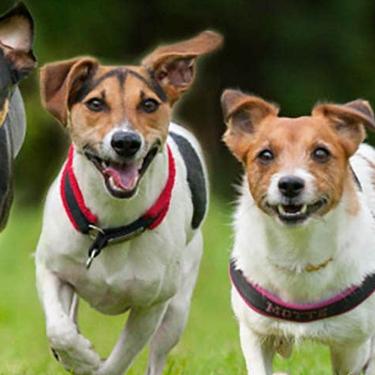
Learn about Hill's puppy food and the nutritional benefit & high quality ingredients that it contains for your pup.
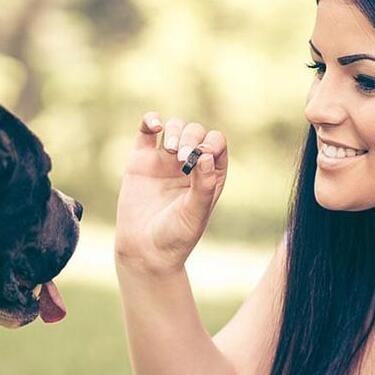
Proper nutrition for your pregnant or nursing dog is vital to her and her puppy's health. Learn what you should do provide her with the proper nutrients.
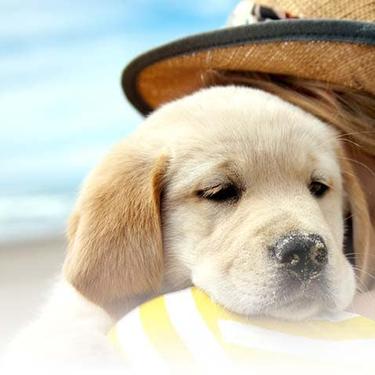
Large and giant breed puppies have different nutritional needs than other dogs. Learn how to provide the special care they need to grow up big and strong.

Understand the role that Omega-6 and Omega-3 fatty acids play in your dog's overall health, and how you can ensure they are getting enough.
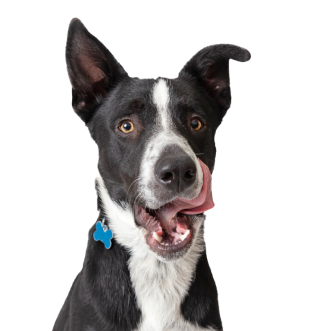
Put your dog on a diet without them knowing
Our low calorie formula helps you control your dog's weight. It's packed with high-quality protein for building lean muscles, and made with purposeful ingredients for a flavorful, nutritious meal. Clinically proven antioxidants, Vitamin C+E, help promote a healthy immune system.
Put your dog on a diet without them knowing
Our low calorie formula helps you control your dog's weight. It's packed with high-quality protein for building lean muscles, and made with purposeful ingredients for a flavorful, nutritious meal. Clinically proven antioxidants, Vitamin C+E, help promote a healthy immune system.

